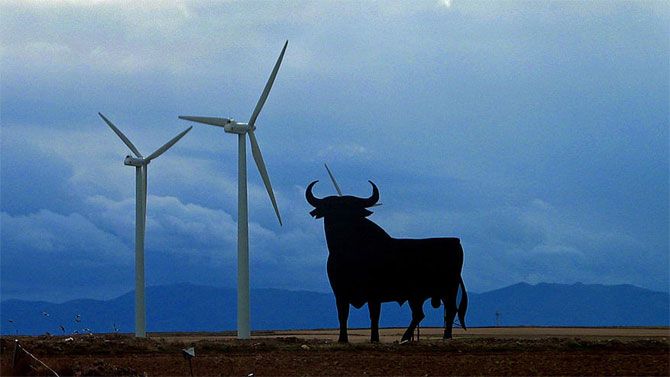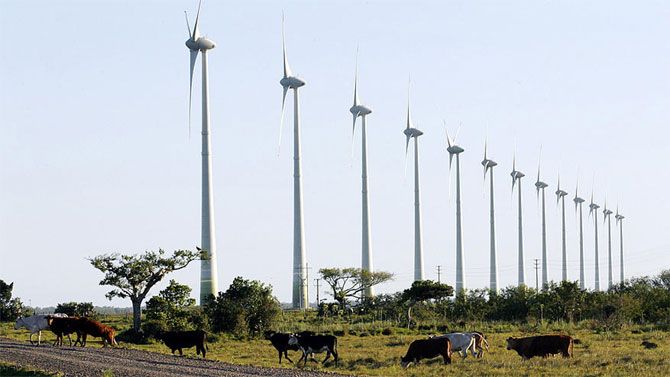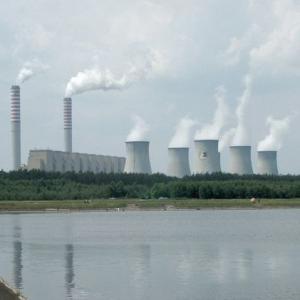The price of wind power may soon compete with conventional fossil fuels, according to researchers in the United States
Wind is a clean source of renewable energy that produces no pollution. And since it is free, operational costs are nearly zero once a turbine is erected.
In 2010, China beat US to become the biggest producer of wind power. Here is a list of the top ten wind power countries.

China
With a capacity of 114,763 Megawatts in 2014, China has by far the world's biggest wind power sector, accounting for 31 per cent of the global total. Wind energy has grown spectacularly in recent years - China installed 45 per cent of all new capacity in 2014. The country's large land mass and long coastline mean China has excellent wind power potential.
The Global Wind Energy Council reckons that the scale and pace of wind energy development in China cannot be matched by any other country. With more than a dozen turbine manufacturers, the wind sector has became one of the key growth components of the country’s economy. The first permanent magnetic levitation wind turbine, which allows electricity production even at low wind speeds, was developed by Chinese manufacturers.

United States
As of 2014, the United States boasted a wind power capacity of 65,879 Megawatts. The US wind industry has had an average annual growth of 25.6 per cent over the last 10 years. The US added 4,854 Megawatts of new wind power capacity in 2014, considerably down on previous years and less than a quarter of what China added.
Wind power generates about 4.4 per cent of the country’s electricity, although in five states, including Iowa and Minnesotta, the level is over 10 per cent. Texas has the biggest wind energy capacity. If the state were a country, it would be the sixth biggest wind energy producer in the world.

Germany
In 2014, Germany had 39,165 Megawatts of wind power capacity, 10 per cent of the global total. It was second only to China in terms of new capacity added in 2014, installing over 5,000 Megawatts. Wind accounted for about 9 per cent of the country’s total generated electricity in 2013. In some northern states the proportion is as high as 40 per cent.
In April 2010, Germany opened its first offshore wind park, Alpha Ventus, in the North Sea. Offshore wind is seen as a major growth area for a government that wants to see 76,000 Megawatts of wind energy installed by 2020. One challenge is the lack of grid connections from the North Sea coast to the major markets of southern Germany.

Spain
With an installed capacity of 22,987 Megawatts in 2014, Spain ranks fourth among the world’s top wind energy producing countries. However, Spain's wind sector has stagnated in recent years. Capacity has increased just 1,300 Megawatts since 2011.
In 2009, electricity from wind power overtook coal as an energy source and by 2014 wind power satisfied around 21 per cent of the country’s electricity needs, trailing only gas and nuclear power.

India
India is fast catching up with Spain, despite being a relative newcomer to the wind sector. In 2014, India had 22,465 Megawatts of wind power capacity, having added 2,315 Megawatts during the year.
Wind energy accounts for less than 2 per cent of the country’s electricity. The increasing performance of turbines has made wind energy a favored choice, however, and so wind accounts for about 8.5 per cent of total installed power capacity. The Indian Wind Energy Association estimates that electricity generation capacity could reach 65,000 Megawatts.

United Kingdom
By the end of 2014, the installed capacity in the United Kingdom was 12,440 Megawatts, almost double what it was in 2011, enabling the UK to leapfrog France and Italy in the global rankings. Wind power provided 9 per cent of the UK's electricity in 2014.
The UK hosts both onshore and offshore wind farms, with considerable growth occurring in the offshore sector. With its third round of offshore wind farm installations, Britain expects to add up to 29,000 Megawatts of capacity by 2020, at a cost of around $159 billion.

Canada
Canada has moved rapidly up the wind power rankings and in 2014 had 9,694 Megawatts of installed capacity, providing about 3 per cent of the country's electricity demand.
The Canadian Wind Energy Association has an ambitious strategy for wind energy that envisages a capacity of 55,000 megawatts by 2025, meeting 20 per cent of the country’s electricity needs. It would also save an estimated 17 megatons of greenhouse gas emissions annually.

France
France has slipped several places in the rankings since 2011, despite adding around 2,500 Megawatts of capacity to stand at 9,285 Megawatts in 2014. France faces several challenges, most notably inadequate grid connections and protection zones where wind turbines are forbidden.
The French energy association 'Syndicat des Energies Renouvelables' estimates that France has the potential to build 12 times its current wind power capacity and the country could meet up to 20 per cent of its energy demand from renewable sources.

Italy
Helped by the world's most generous feed-in tariffs for electricity produced by wind farms, Italy rapidly scaled up its wind power sector in the first decade of the century. Growth has tailed off since 2011 and with 8,663 Megawatts of capacity in 2014 Italy has slipped down the rankings.
Green energy in Italy perhaps isn’t as clean as it sounds. Anti-Mafia prosecutors have accused local officials and crime gangs of corruption in relation to the construction and sale of wind farms.

Brazil
Brazil is a new entrant into the premier league of wind power producers, but with 5,939 Megawatts of installed capacity, nearly half of that added in 2014 alone, the country is making major efforts to diversify its power sector which is heavily reliant on hydropower.
The Brazilian Wind Energy Association and the government have set a goal of achieving 20 gigawatts of wind energy capacity by 2020. The country's blustery coastline make it an ideal location for wind farms.
Powered by  To read more such stories Click Here!
To read more such stories Click Here!









